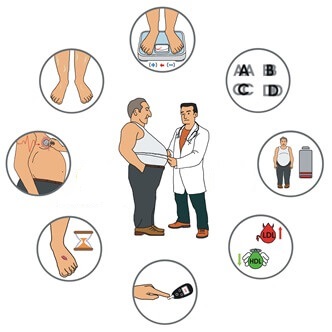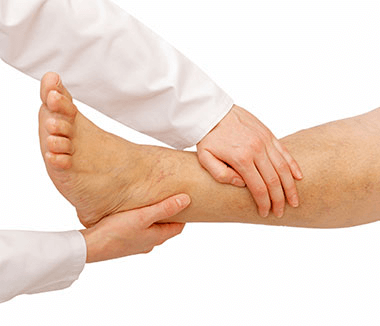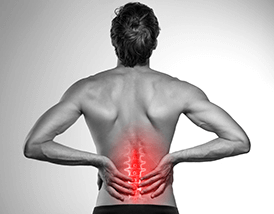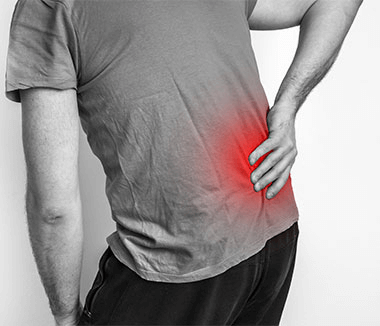See details
READ MORE.jpg)
Transcranial electrical stimulation is gaining more and more ground nowadays, being a therapy with very good results in many neurological diseases, but also for improving sports performance, or for increasing intellectual capacity.
It can be used in neurological disorders as first-line therapy or in combination with drug treatments and remains an alternative if patients acquire drug resistance (drug resistance) or have not obtained favorable results after existing classic treatments.
Neuromotor symptoms in patients with Parkinson's disease (PD) are often difficult to recognize, significantly affect the quality of life, and cause severe disability.
Currently, there is limited evidence to guide the treatment of associated psychiatric and cognitive problems. Non-invasive brain stimulation techniques have emerged as non-pharmacological alternatives to detecting cognitive symptoms without worsening motor function. In this context, we present a multicenter, randomized, double-blind study to evaluate the immediate and long-term effects of the ten consecutive sessions of transcranial direct current stimulation (tDCS) on the right dorsolateral prefrontal cortex anode (DLPFC). (n = 5), on the left side of DLPFC (n = 6) or false (placebo) (n = 7).
Cognitive function, depressive symptoms, and motor function were assessed in 18 patients with PD at baseline, at the end of 2-week stimulation sessions, and one-month follow-up. The results of the study showed that active stimulation resulted in prolonged improvements in the process of performing the B test, an established test for measuring executive function, compared to the false evaluation of DCDC at one month of monitoring. These results suggest a long-term beneficial effect on executive function in patients with PD following a tDCS asset within the DSLFC. Thus, our results encourage further investigations exploring the substance TDCS as a therapeutic adjuvant for cognitive and behavioral treatment in PD.
Introduction
Parkinson's disease (PD) is a neurodegenerative disorder characterized by gradual impairment of emotional, cognitive, and motor function. Although motor symptoms such as resting tremor, bradykinesia, stiffness, and postural instability are hallmarks of this disorder, nonmotor cognitive and psychiatric symptoms (NMS) are both disabling and have a direct impact on patients' quality of life (QOL). with PD. Recent reports show that even after controlling for the duration and severity of motor symptoms, cognitive abilities, such as executive and visual functions, remain positively associated with QOL. In addition, psychiatric comorbidities, namely depression, are constantly among the strongest determinants of QOL. For these reasons,
Cognitive functions are performed primarily by the cortex, where dopamine is known to play a key role. It has been suggested that impaired cognitive function is linked to a disruption of the dopaminergic system, which is also severely affected by PD. Cognitive deficits in Parkinson's disease are similar to a dysexecutive syndrome. Depression, a common comorbidity in PD, is also suggested to be caused by changes in dopaminergic transmission and changes in arousal and imbalance between left DLPFC (L-DLPFC) and right DLPFC (R-DLPFC).
Non-invasive brain stimulation techniques, such as transcranial direct current stimulation (tDCS) and transcranial magnetic stimulation (TMS), are safe and effective methods of improving cognitive and affective functions. TDCS applied with the anode over the LPFC and the cathode over the right supra-orbital region can improve the working memory of healthy subjects, and can improve the mood of patients with major depression. In this context, several studies have documented the beneficial effects of TMS and TDCS on cognitive and behavioral symptoms in PD, without aggravating motor symptoms.
These results support the idea that active stimulation of DSLFC with TDCS could have long-term beneficial effects on both affective and cognitive domains in patients with PD. Therefore, we conducted a double-blind, double-blind tDCS study in patients with PD. We hypothesized that the application of tDCS by L-DLPFC would improve cognitive function and affective symptoms without altering motor function with false stimulation.
Methods
Behavioral assessments
Mood / emotional assessment included the Beck Depression Inventory (BDI), a 21-question self-report and multiple-choice questionnaire; The Hamilton Depression Assessment Scale (HRSD), a scale for several options scored with 21 questions; And the Hamilton Anxiety Scale (HAS), a 14-question scale for assessing the severity of anxiety symptoms. These scales have been used previously in evaluating the effects of rTMS on impairment in patients with PD.
Mood / emotional assessment included the Beck Depression Inventory (BDI), a 21-question self-report and multiple-choice questionnaire; The Hamilton Depression Assessment Scale (HRSD), a scale for several options scored with 21 questions; And the Hamilton Anxiety Scale (HAS), a 14-question scale for assessing the severity of anxiety symptoms. These scales have been used previously in evaluating the effects of rTMS on impairment in patients with PD.
Evaluation of engines
To assess motor function, the following tests were administered: Unified Parkinson's Disease Assessment Scale Part-III (UPDRS-III), Reaction Time Test (SRT) (right and left), Optional Reaction Time Test (4-CRT) ) (right and left), Peglar PPPT test (right and left), Finger Touch (FT) (right and left), walking time (WT), and Pronation and Supination Test (PPT).
Statistical analysis
Statistical analyzes were performed using STATA / IC 12 (Stata-Corp LP, TX, USA). We used the analysis of the intention to treat with the last observation, made as a method of imputation. Between-group differences in demographics and benchmarks were compared using a single ANOVA for continuous variables and Fisher's exact test for variables that could be classified. Because we anticipated a differentiated effect during stimulation versus monitoring, we divided these two periods as tDCS treatment and monitoring. Thus, the analyzes took into account this differentiated effect. We ran models using a two-part linear spline function, which allowed us to analyze the slope at these two different time points. For group comparisons, we performed ANCOVA models that compare the differences between groups and we checked the basic values. The correlations between cognitive, affective, and motor functions were evaluated by correlation tests in pairs.
Result
Cognitive effects
- DCDC treatment: There was a significant effect over time for the first period (from baseline to the end of the stimulation session - tDCS treatment period) (beta coefficient of -38.54 s, p = 0.006). To analyze the group effect we made an ANCOVA model adjusted for the reference values. In this model, no group differences were found for the tDCS treatment period (p = 0.49, effect size for the group; Eta2 = 0.02, percentage change eta2 = 7.75, eta2 = 0.03), indicating that improved TT-B performance was similar between groups.
- Follow-up period: No main effect of time was found for this period (beta coefficient of 43.76 and had only a significant trend, p = 0.064), there was no improvement in performance during the follow-up period. However, the group effect analysis with ANCOVA showed a significant group effect. (p = 0.02, effect size for group; eta2 = 0.15, percentage change eta2 = 22.19, eta2 = 0.32). The comparison of the group of fakes with both active groups of tDCS showed a significant difference (p <0.001) (fictitious group: 25.3 s 19.5; active group: -8.7 s 6.2), indicating that the groups had differentiated retention effects. Although both active groups maintained improved TMT-B performance, the performance of the MartDCS group returned to reference levels.
- Reference scenario vs. Monitoring: Finally, to evaluate the general improvement of the groups, we developed an ANCOVA model comparing the reference scenario with the monitoring period and we also found significant effects (p = 0.03; the average difference between the subsequent actions and the reference scenario; L-DLFC = 45.25 s 59.83; R-DLPFC = 46.41 s 39.34 and false group = 15.45 s 57.97, the effect size for the group; Eta2 = 0.25, percentage variation eta2 = 64.68, eta2 = 0.29), which shows that, over time what active groups maintained the positive effects, the false tDCS product group lost most of this effect at one month of follow-up and returned to baseline levels.
Motor effects
Analyzes of tests related to motor functions (supination-pronation, buttoning, finger touch, walking time, grip plate, reaction time, and motor part of UPDRS) failed to show significant effects of stimulation (all p> 0.05). This suggests that motor function did not improve or decrease during the study.
Correlations
Correlation tests in parallel with the Bonferroni correction for the two significant results (BDI and TMT-B) did not show any significant association between any of the paired analyzes.
Discussion
Conclusions
.jpg) | .jpg) |
Our specialist, Dr. Edis Mustafa, confidently recommends this new therapeutic approach, with exceptional personal results similar to those in various international studies published with patients treated so far.
Here you can find a detailed list of prices for transcranial electrical stimulation (tES) services.
Prices
You can find here a detailed list of the prices of individual services. But any correct recovery process is based on a mixed plan of therapies and procedures, customized according to the condition, stage of the condition, patient profile, and other objective medical factors. As a result, in order to configure a treatment plan, with the therapies involved and the prices related to the plan, please make an appointment here for an initial consultation.
SUCCESSFUL RECOVERY STORIES
MAKE AN APPOINTMENT
FOR AN EXAMINATION
See here how you can make an appointment and the location of our clinics.
MAKE AN APPOINTMENT













































































































































